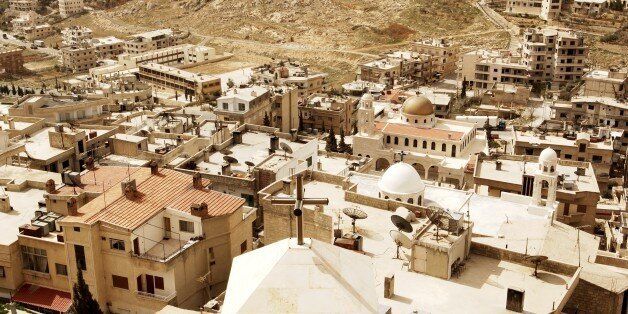
Earlier this week one of the commentators on the late-evening BBC newspapers review slot spoke about a horrifying front-page article headline in the following day's Times. "Assad hangs thousands of tortured opponents", said the headline. It was "to the Times's credit", said the reviewer, that the paper "was still doing stories like this".
Well, the story was certainly important. It concerned the findings of Amnesty's new report laying bare the horrifying reality of life in one of President Assad's military prisons - Saydnaya, in Damascus.
Here almost unimaginable brutality is the norm. Between 10,000 and 20,000 detainees are crammed into cells in Saydnaya - some in a wing for military prisoners (the "white building"), some for civilians (the "red building"). The majority of Saydnaya's inmates are there because they've been identified as opponents of the Assad government - longterm dissidents, demonstrators, students, human rights activists. Or they're suspected of being opponents. None has received a proper trial.
Without exception, everyone at Saydnaya is subjected to a sustained and deliberately life-threatening programme of relentless torture. One former detainee described Saydnaya's "intense" beatings like this:
"It was as if you had a nail, and you were trying again and again to beat it into a rock. It was impossible, but they just kept going. I was wishing they would just cut off my legs instead of beating them any more."
Whereas torture in other parts of Assad's extensive network of detention centres is used to force detainees to confess to something, at Saydnaya it's used to punish, degrade and deliberately kill. Degradation is the key element. In the so-called "group room" (cells with 30-35 people) inmates are forced to select a "shawish", or cell leader, whose job it is to select the five people per day who are to be taken out of the cell and tortured. If the shawish refuses, he himself will be severely tortured, possibly to the point of death. One former detainee has described the process:
"The guard would put a spoon on the head of one person in the cell, and would say 'You are the pimp of the room' ... Because the shawish took a lot of beating, that person would die every week of two, and we would need a new one. The guard would put the spoon on the head of a new detainee, and then we would have a new shawish."
The calculated cruelty takes many forms. Food is withheld and then thrown onto the dirt, blood and puss of the overcrowded cell floors. The water supply is regularly cut off for days on end, with desperate thirst-maddened prisoners reduced to drinking their own urine. There is no medical care and almost all the prisoners are suffering from scabies, diarrhoea and other infectious conditions. Anyone asking for help from a Saydnaya prison doctor risks being tortured by the guards or even by the doctor themselves.
Like the Soviet gulags or other notorious concentration camps, Saydnaya is a place of "extermination", a recognised crime under international law. The regime itself is designed to decimate life.
But the killing regime is also more chillingly direct as well. Some of Saydnaya's former detainees have told me about the regular mass hangings at the prison. At regular intervals blindfolded prisoners are taken out of the camp for a sham trial (lasting no more than three minutes) before a so-called "Military Field Court". Here they're automatically found guilty and a death sentence is drawn up. Back in Saydnaya, around two months later condemned prisoners are told they're being transferred to a civilian prison, a rare moment of hope for these tattered, emaciated inmates. Instead, in blindfolded groups of between 20-50 men, they're removed from their cells at around midnight, subjected to a ferocious three hours of beating before being summarily hanged at around 3am. They often don't know the hanging is about to occur until they actually feel the noose being put around their necks.
All in all, between September 2011 and December 2015 we calculate that up to 13,000 people have been hanged in this squalid way at Saydnaya. Maybe more. In addition, countless others have succumbed to disease and torture. And, as far as we know, this is still going on.
Saydnaya is a place of unimaginable terror. Even when you know about the numerous horrors that have already unfolded in Syria in the past half-decade, it chills you to the bone to hear survivors telling you what it was like to be in Saydnaya. The 30 or so former detainees we spoke to have been to hell and back.
So it's right what that BBC paper reviewer said. It is important that major newspapers keep putting stories like the slaughterhouse of Saydnaya on their front pages. And I'm determined to keep telling the terrible story of what's happening in Saydnaya and elsewhere in Syria. We owe it to the survivors, as well as to the relatives of those who tragically haven't survived.
Our common humanity demand that we pay attention to what is happening at Saydnaya. The dark crimes that have occurred there should be known the world over. Reporting on it now is the first step toward bringing the perpetrators and their political masters to justice.
